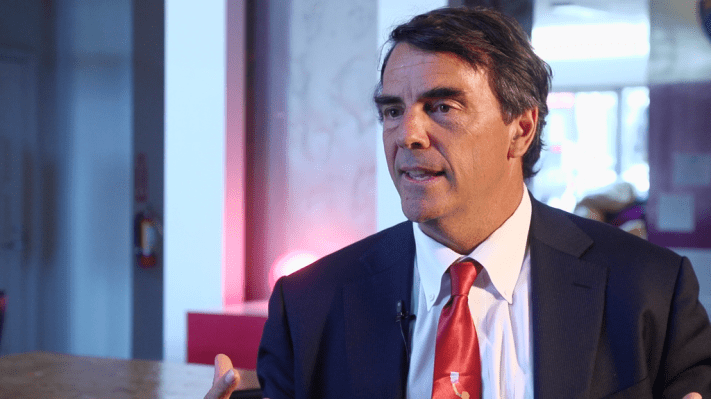Over the years, Draper Fisher Jurvetson, the 30-year-old Silicon Valley venture firm, famously created a partner network of independent but DFJ-branded venture firms around the world. It was one of the first and only venture firms that have attempted such a program, in fact.
Then, two years ago, it said it was shifting gears. The branding was growing confusing for the firms’ separate investors, it said. It also argued that its affiliates were maturing and ready to operate under their own names.
It’s a very different story again today. Since leaving an investing role at DFJ in 2013, firm cofounder Tim Draper has kicked his own seed investing into overdrive. He’s also taken charge of the former DFJ Global Network, renaming it Draper Network, and instituting a bunch of other new initiatives.
For one thing, as we reported this summer, the co-branding approach is back. As Draper told us in an interview yesterday, “It’s each fund’s choice essentially” to use or not use “Draper” in its name. “But globally, Draper is the bigger brand,” which maybe explains why the six venture firms that have long been part of the network are choosing to hang on to it after all, including Draper Athena in Korea and Draper Esprit in London.
Three of those funds — Draper Nexus in Japan, Draper Triangle in Pittsburgh, and Draper Athena — have raised new funds of $100 million, $75 million and $60 million, respectively, this year, notes Draper, suggesting that the association with his family name helped.
And there are other changes afoot. Draper is aggressively working to grow the network’s reach, for example, today announcing three new members to its club: 3TS in Central and Eastern Europe; Wamda Capital in the Middle East, and Dalus Capital (formerly Alta Ventures) in Mexico City. Draper says the network, which typically approaches venture firms and not vice versa is zeroing in on new partners in Brazil, India and China, too. “Our lifeblood is deal flow, and we all get a ton more by working together,” he says.
Also new: Membership dues and carry are now determined by the member funds themselves and have been “dramatically reduced” since the reorganization. Draper isn’t breakout specifics, but he says the money is largely used to “keep the Draper Network team running here.”
Which raises a fourth point, which is that the Draper Network is officially becoming a juggernaut unto itself. Not only does it feature a governing board — one composed of Draper along with different, revolving representatives from the network’s affiliates — but it has a growing, full-time staff that’s available to any Draper Network member that wants help with due diligence, business development, or ideas about syndicate partners.
In fact, that same team is right now hosting on weeklong “CEO summit” that has brought together 40 startups backed by various Draper Network affiliates, representatives from 125 venture funds, 115 CEOs, and 60 “corporates,” all with the hope that they’ll talk about strategic tie-ups, if not something even more permanent.
Evidently, the team is also busy thinking about a new way for institutional investors to back every affiliate in one fell swoop. Says Draper, “No meta fund or anything has been launched, but we’re researching a fund-of-funds type vehicle across the network. It would be the kind of investment that people, if they just want to invest in venture capital worldwide, would be able to do easily.”
As for Draper, whose personal investments have been mounting, don’t be surprised to see him close his own, institutional venture fund in the meantime.
Asked about a vehicle that would be his first since leaving DFJ, he says with a laugh, “I can’t say anything. I don’t want to get in trouble with the SEC.”
